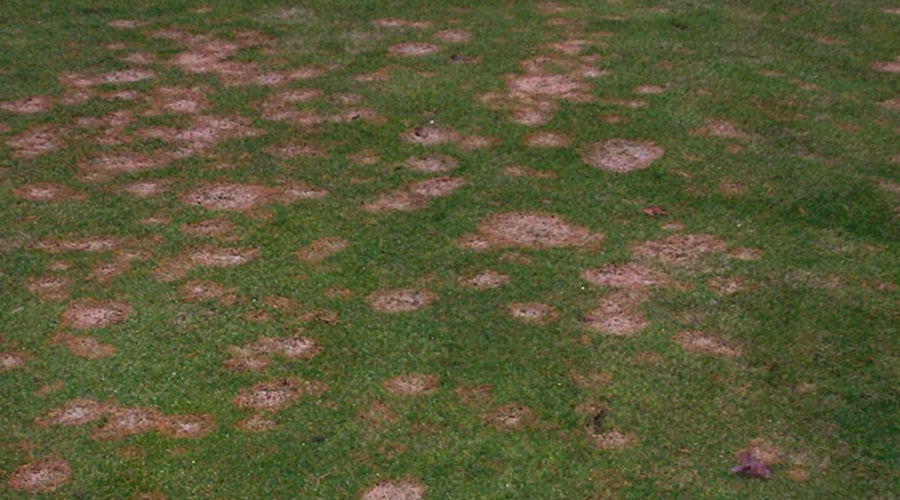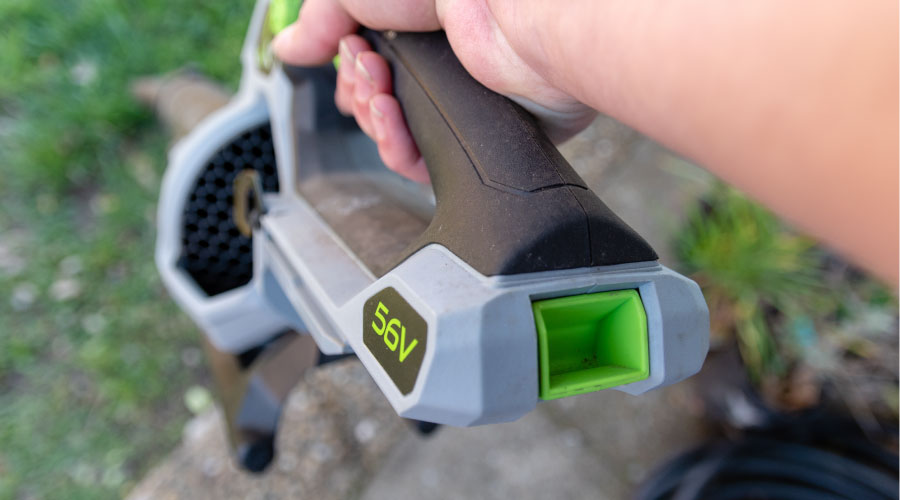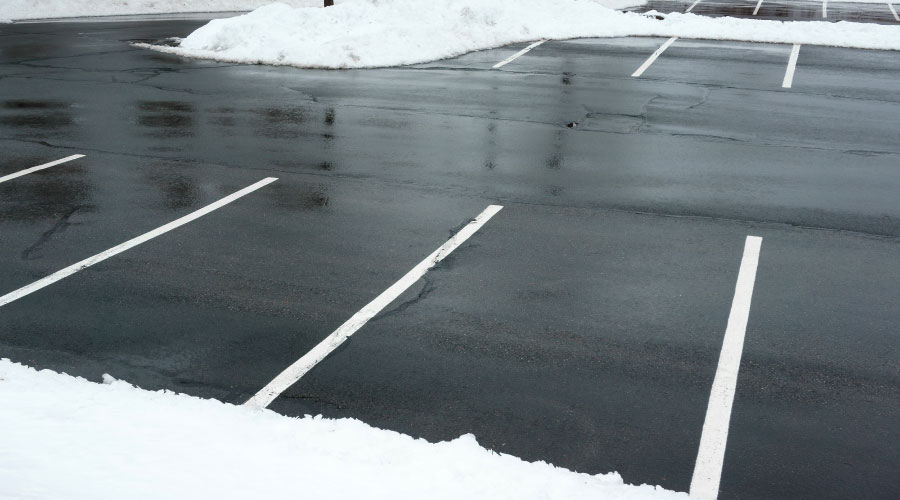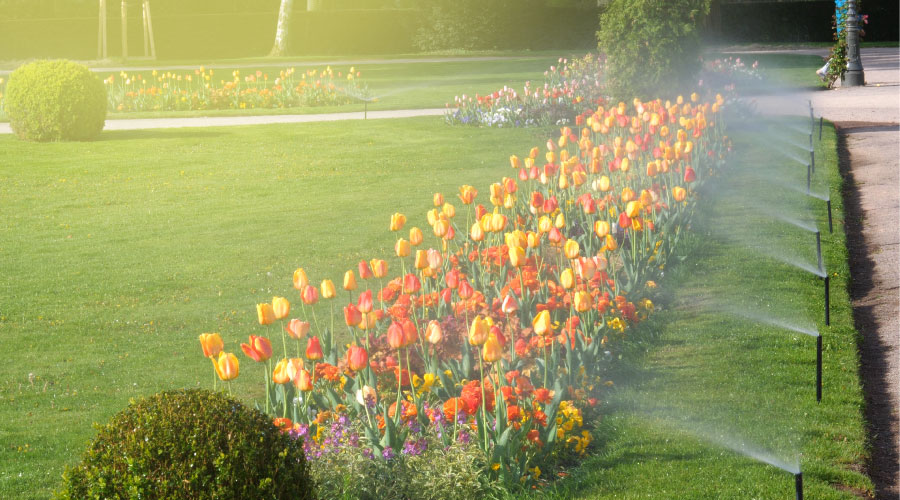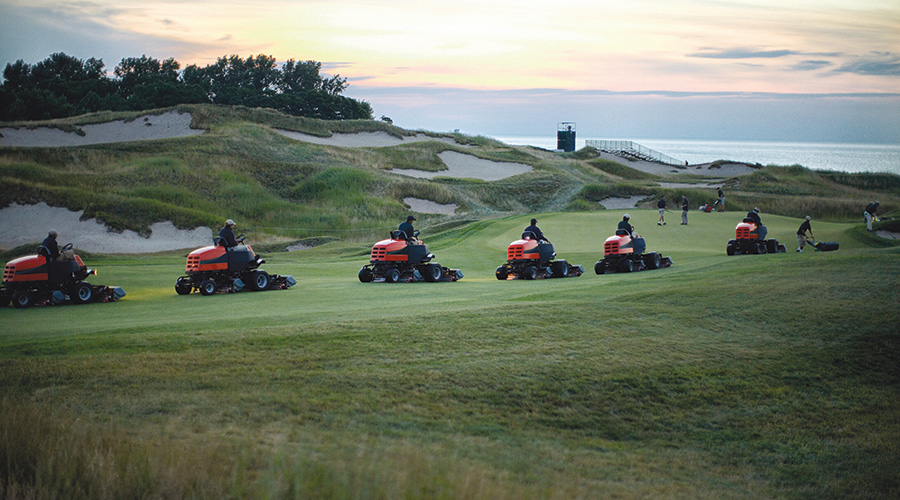Spring Grounds Checklist for Managers
From analyzing winter damage to preparing landscapes for planting, grounds managers have plenty on their plates in spring
By Tom Marsan, Contributing Writer
The winter months may linger on in parts of the country, but spring is just around the corner. While things are a bit slower in the dormant landscaping season, there’s still plenty of things for grounds managers to do at their institutional and commercial facilities to prepare their grounds for the summer.
Here’s a checklist that ground managers can start working on.
Analyze the property
Now is the time for managers to analyze their property with a keen eye. Begin by looking for snow mold or vole infestations. You may notice straw-colored circular patches scattered across your turf. The turf often appears flattened and stiff. If the patches are caused by gray snow mold, they will exhibit a grayish-white hue, whereas those resulting from pink snow mold will display a whitish-pink tint. Pink snow mold poses a greater threat as it can harm the crown and roots of grass, potentially leading to more severe damage. Gray snow mold typically affects only the grass blades.
It’s also important to consider the overall appeal of the property’s buildings. Sure, the buildings might look stunning in the summer, but the best grounds managers ensure everything shines just as bright in the winter months. If some color is missing, consider adding evergreen trees or winterberry shrubs. These will ensure a vibrant color even in the winter.
If it feels dark and dreary, some landscape lighting might be in order.
Test the soil
March can be an excellent time to test the soil in preparation for spring planting. Testing the soil during these months allows ample time to receive the results and take corrective actions before the growing season begins. By assessing the soil's pH levels, nutrient content, and composition, grounds managers can determine what amendments may be necessary to optimize soil health and support robust plant growth.
Conducting soil tests in late winter also enables gardeners to plan their planting schemes more effectively, ensuring that the soil is adequately prepared to provide the ideal conditions for the desired plants.
Get ahead of crabgrass
Around late March, consider using a pre-emergent herbicide to get rid of crabgrass. Dithiopyr, pendimethalin, and prodiamine, along with other similar products, are frequently used pre-emergent herbicides accessible to homeowners, effectively preventing the emergence of crabgrass.
Do this before the crabgrass seeds can germinate but doing it too early won’t help either. Apply the pre-emergent herbicide when soil temperatures reach roughly 55 degrees. If the window is missed, post-emergent herbicides like quinclorac and mesotrione can still be used but should be applied while the plants are still young.
Apply mulch
March mulching offers many benefits to maintain a healthy and vibrant landscape. Mulching helps with weed control, keeps the soil from overheating, and it holds in moisture. Mulch acts as a natural insulator, regulating soil temperatures to provide an optimal environment for plant root development and microbial activity. It also adds organic matter to the soil as it breaks down, making it a great looking and beneficial addition to any landscape.
Clean, repair, replace
As spring approaches, it's time to get your turf equipment and garden tools in top shape. Start by cleaning each tool thoroughly, removing any dirt, rust, or debris that may have accumulated during the winter months. Check for any signs of damage or wear, such as broken handles or dull blades, and make necessary repairs promptly to ensure safe and efficient use. Sharpen blades and lubricate moving parts for optimal performance. Change the oil, air filters, and spark plugs on the machines in the mower fleet.
For items beyond repair, consider replacing them to avoid setbacks during the season ahead. Even checking the irrigation is important during this time. Taking these proactive steps will help grounds managers maintain a well-kept garden and tackle outdoor tasks with ease.
Plants and trees
The late winter months offer a prime opportunity for dormant pruning. Dormant pruning encourages healthier growth in the spring by removing dead, diseased, or overgrown branches. Without leaves obscuring the tree's structure, it's easier to identify and address issues. Additionally, winter pruning reduces the risk of disease transmission and minimizes stress on the tree, as it's less active during this time.
Winter is also an ideal season for tree removal. Removing hazardous or unwanted trees in winter ensures a smoother transition into the growing season, promoting safety and enhancing the aesthetic appeal of outdoor spaces. Most insects, pests, and fungus are dormant, mitigating the risk of spreading diseases. Flower beds and grass also won’t be as susceptible to damage because of the hardened soil. Lastly, without the leaves, cleanup and inspection will be easier as well.
Dethatching
The best time to dethatch a lawn is when it is actively growing and the soil is decently moist. The process involves removing the dense layer of thatch, a mat-like accumulation of organic debris such as dead grass, leaves, and roots that have not decomposed. When this layer becomes too thick, it can stop air, water, and nutrients from getting in, jeopardizing the long-term health of the turf.
For warm-season grasses like St. Augustine, Bermuda, and Bahia, late-spring to early-summer is typically ideal for dethatching. For cold-season grasses like Kentucky bluegrass, rough bluegrass, and fescue, early spring is the recommended time for dethatching, although it can also be done in the fall before the colder weather. Regardless of the grass type, spring generally stands out as one of the prime seasons for dethatching your turf.
Plan and design
Utilize the quieter winter months to plan and design upcoming landscaping projects. This could involve sketching out new garden layouts, researching plant varieties, or consulting with landscaping professionals to develop comprehensive design plans tailored to your property's unique needs and aesthetic preferences.
Proactive landscaping efforts now can set the stage for a vibrant and healthy outdoor space in the months to come. By following this comprehensive checklist, grounds managers can navigate the transition from winter dormancy to spring growth with confidence.
Tom Marsan is a certified snow professional who has been in the landscaping and snow removal industry for about two decades. He is an active member of ILCA and SIMA and is currently the general manager at Beverly Companies in Chicagoland.
Related Topics:








